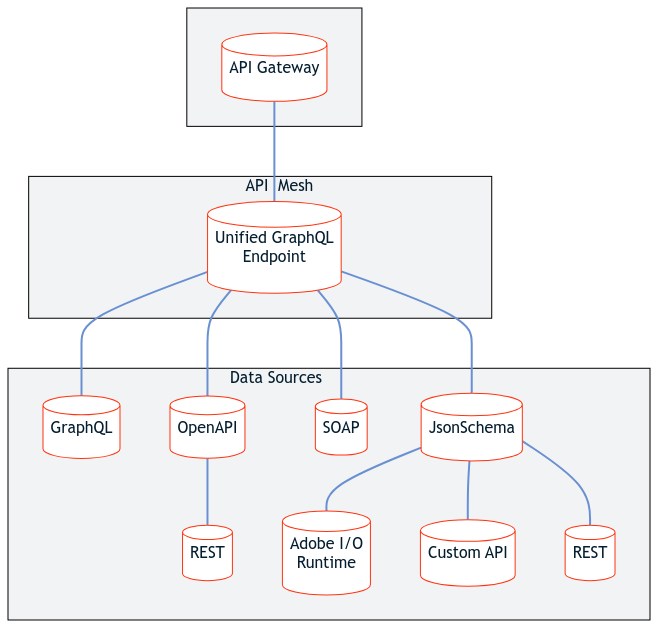
API Mesh for Adobe Developer App Builder
API Mesh for Adobe Developer App Builder is an orchestration layer that enables developers to seamlessly integrate private and third-party APIs with Adobe products and APIs.
Update notice for legacy mesh URLs
API Mesh now runs at the edge, and legacy mesh URLs are no longer available. Click the Update notice to find more information on how to update your mesh:
API Mesh allows developers to combine multiple data sources into a single, queryable GraphQL endpoint. GraphQL allows you to determine the information the response contains, unlike REST APIs, which have fixed response formats.
By serving multiple sources through a single gateway and providing customized responses, API Mesh creates a better user experience for accessing your backend services.
Features
- Adobe API Manager - A reverse proxy that accepts most API calls for many backend services
- Configurable Integrations - Low/No-code method to integrate with your own private APIs with Adobe Commerce, other Adobe products, and third-party APIs
- Backward Compatibility - Preserve existing APIs while gradually adopting new ones
- Extensibility - Customize and extend your APIs directly in the gateway without making changes to the API source
- Advanced Security - Web application firewall (WAF) and distributed denial-of-service (DDoS) protection for all your APIs

Related information
Use the following sections to learn more about the API Mesh and extensibility at Adobe.
API Mesh for Adobe Developer App Builder
Allows developers to integrate private and third-party APIs and other software interfaces with Adobe Commerce and other Adobe products using Adobe IO.
Is a complete framework that enables enterprise developers to build and deploy custom web applications that extend Adobe Experience Cloud solutions and run on Adobe infrastructure.
Adobe I/O Events for Adobe Commerce
Makes Commerce transactional data available to App Builder using Adobe I/O. You can define the events to transmit data each time an event triggers, or only under circumstances defined within configuration rules.
Contributing to this documentation
We encourage you to participate in our open documentation initiative. If you have suggestions, corrections, additions, or deletions for this documentation, check out the source on GitHub and open a pull request.